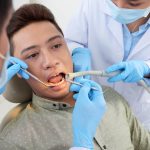Car accidents happen fast. In these moments, a seatbelt plays a crucial role. It protects you from severe injuries by keeping you safely in your seat. However, while it can save your life, it might still leave you hurt. Bruises, discomfort, or even fractures can arise from the safety device meant to protect you. You may feel confused, overwhelmed, or frustrated. These feelings are normal after an accident. Seeking medical attention is vital even if injuries seem minor. You should also get legal help. Legal experts provide guidance through the maze of insurance claims and potential lawsuits. They ensure you receive the care and support you need. Remember, taking these steps can make a difference in your recovery and peace of mind. Stay informed. Seek assistance. Protect yourself and your rights.
The Role of Seatbelts in Safety
Seatbelts are lifesavers. They prevent you from being ejected from the vehicle during a crash. The National Highway Traffic Safety Administration states that wearing seatbelts reduces the risk of death by 45% in car crashes. It also cuts the risk of serious injury by 50%. They work by holding you in place, distributing the force of impact across stronger parts of your body.
Common Seatbelt Injuries
While seatbelts are essential, they can sometimes cause injuries. Common ones include:
- Sternum fractures
- Clavicle injuries
- Bruising across the chest and abdomen
- Shoulder injuries
These injuries occur because seatbelts are designed to restrain you with maximum efficiency, which can exert significant force on your body.
Understanding the Mechanics
When a crash happens, the seatbelt locks in place. This action prevents you from moving forward with the vehicle’s momentum. However, this sudden stop can lead to injury. It’s a trade-off. The alternative is often far worse. Understanding these risks helps you make informed decisions about your safety.
Data on Seatbelt Effectiveness vs. Injury Risk
| Impact | Without Seatbelt | With Seatbelt |
| Risk of Fatality | Higher | 45% Lower |
| Risk of Serious Injury | Higher | 50% Lower |
| Risk of Minor Injury | Lower | Higher |
Steps to Take After an Accident
After an accident, follow these steps. First, assess for injuries. Even if you feel fine, seek medical attention. Internal injuries are not always obvious. Second, document the scene. Take photos and gather witness information. Third, contact law enforcement. A police report aids in any legal action. Finally, consult a legal professional. For more guidance, visit the National Highway Traffic Safety Administration for safety tips.
Legal and Medical Support
Accidents often lead to complex legal and insurance issues. Legal experts can help you navigate these challenges. They provide advice on claims, compensation, and rights. Medical professionals assess and treat any injuries, ensuring your health is the priority.
Conclusion
Seatbelts save lives. Despite the potential for minor injuries, the protection they offer is invaluable. Understanding their importance and knowing how to handle potential injuries ensures both safety and peace of mind. Always wear your seatbelt. Stay prepared and informed. Protect yourself and your loved ones.










